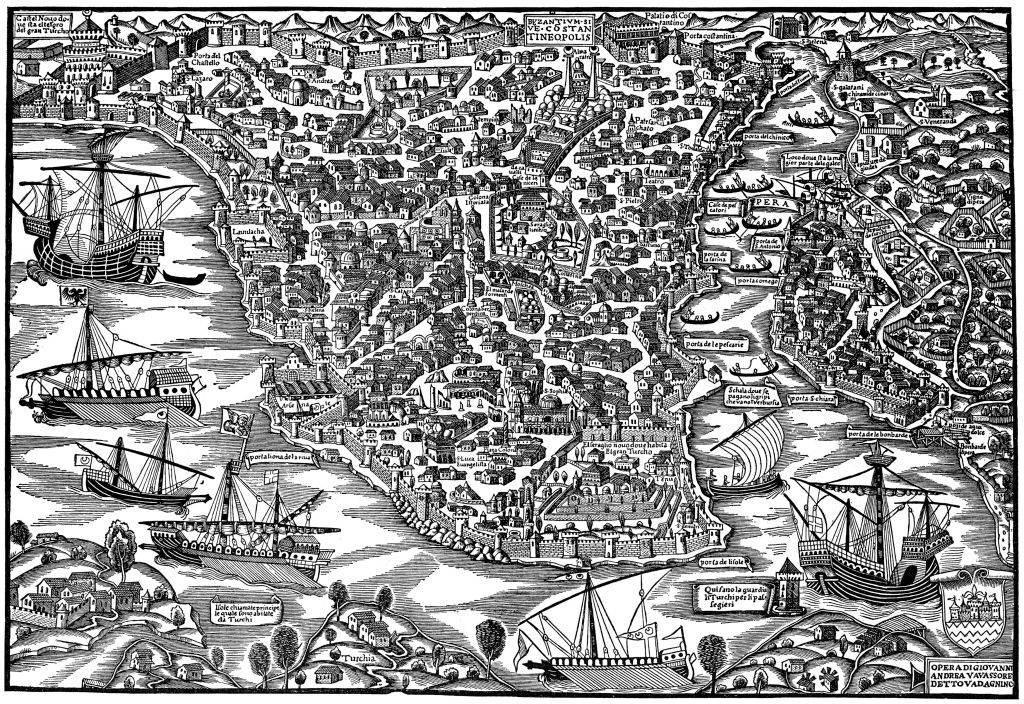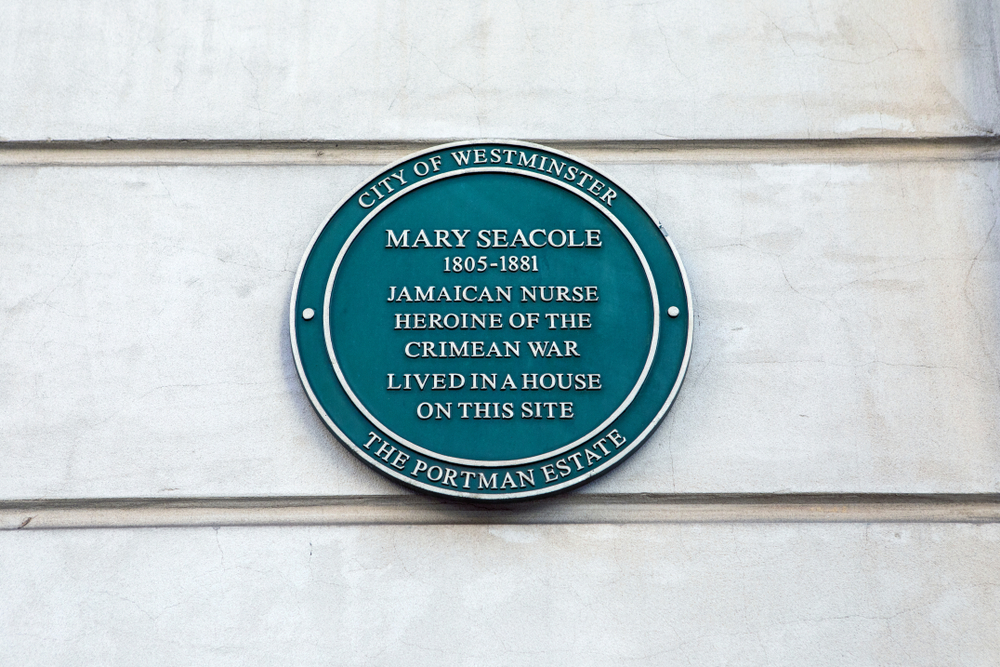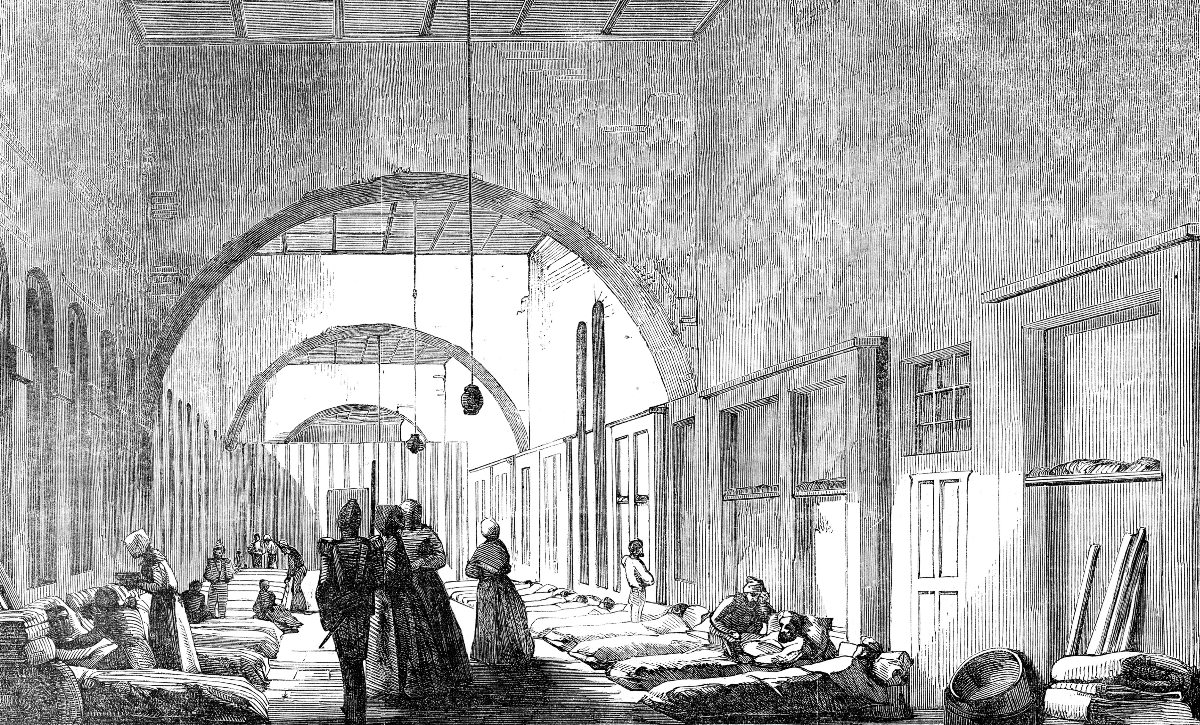Mary Seacole spent her life playing second fiddle to Florence Nightingale, and this lifelong rivalry continued beyond the grave.
1. She Was Three In One
The life of Mary Seacole provides three stories in one. Seacole was an intrepid adventurer who was one of the first women to dare to travel solo. She was also a healing practitioner who bravely entered battlefields at her own peril. And then there’s her feisty entrepreneurial spirit. Only Seacole could take a pile of scrap material and build a makeshift hotel in a heartbeat. What a life!
2. Her Mother Was A Mystery
Mary Seacole was born on November 23, 1805 in Kingston, British Jamaica. Seacole’s Mom, known as “the Doctress,” ran a boarding house called Blundell Hall where she used African and Caribbean herbal medicine to relieve the suffering of British servicemen. It was a busy place to be, and there was a risk that mom would lose little Mary in the shuffle.
In fact, it was the opposite that happened.
3. She Was Her Own Patient
While her mother attended to the ill and injured, little Mary Seacole attended to her own patients. This started with her dolls, expanded to her cats and then moved on to her own body. Once her mom thought she was ready, Seacole joined her in the treatment of real people. It was the perfect training ground and—once she’d grown up—Seacole was ready to attack a very alarming reality.
 October Films, Mary Seacole: The Real Angel of the Crimea (2005)
October Films, Mary Seacole: The Real Angel of the Crimea (2005)
4. She Never Lost A Single One
When it came to childbirth, Jamaica had a high fatality rate. It was a chilling 25%. Seacole took what she’d learned from her mother and mixed it with what she’d seen the British military doctor doing. Seacole created a hybrid method to treat expecting mothers—and the results were extraordinary.
Seacole could proudly state that in her years of helping women give birth, she never lost a child or mother. However, she knew she still had much more to learn, and she knew exactly where to do it.
 October Films, Mary Seacole: The Real Angel of the Crimea (2005)
October Films, Mary Seacole: The Real Angel of the Crimea (2005)
5. She Packed Her Own Currency
Mary Seacole made a trip to England as teen, but when she returned she realized she hadn’t finished learning. To pay for another trip, Seacole started packing a suitcase with Jamaican pickles and preserves. These were not meant as snacks for the long voyage. No, this would be what Seacole used to pay for things when she got to London.
Seacole was taking a huge risk, and not just a financial one.
6. She Went Solo
Back in those days, women did not travel without a male relative or chaperone. Seacole didn’t care, and forged ahead anyway. It wasn’t long until she ran into trouble. Seacole and a female friend met up with some boys in London. The boys were harassing Seacole’s West Indian friend and Seacole wasn’t sure why.
Seacole soon figured out the reason, and it came as a shock.
 October Films, Mary Seacole: The Real Angel of the Crimea (2005)
October Films, Mary Seacole: The Real Angel of the Crimea (2005)
7. She Faced Prejudice
The boys were tormenting Seacole’s West Indian friend solely based on the color of her skin. You see, her friend had a darker complexion, and Seacole was light-skinned. Finding this kind of prejudice in England took Seacole by surprise, and she never forgot it. She also resolved never to put up with it again.
After two years in London, Seacole was ready to go home. As it turned out, home really needed her.
 October Films, Mary Seacole: The Real Angel of the Crimea (2005)
October Films, Mary Seacole: The Real Angel of the Crimea (2005)
8. They Were Desperate
Seacole arrived back in Jamaica and hit the ground running. Mom needed her with the patients at Blundell Hall, and then she got a desperate plea from the British Hospital at Up-Park Camp. The enlisted men were contacting—and dying from—yellow fever at an alarming rate. It seemed that Seacole’s life was a nonstop race with no pause button.
And then something made her stop.
 Everett Collection, Shutterstock
Everett Collection, Shutterstock
9. She Was In The Dark
Mary Seacole traveled extensively throughout the Caribbean, but that came to a stop when she met a man. Edwin Horatio Hamilton Seacole had a long name and an unusual past. The story goes that his father was none other than Lord Nelson. Nelson, whose statue stands tall in London’s Trafalgar square, was one of the greatest naval commanders of all time.
On November 10, 1836, Seacole and Edwin walked down the aisle, but there were things that she didn’t know about her groom.

Sign up to our newsletter.
History’s most fascinating stories and darkest secrets, delivered to your inbox daily. Making distraction rewarding since 2017.
10. He Was A Man Of Mystery
Seacole’s new man may have had a famous father—but he was hiding a shameful secret. His mother was not Lord Nelson’s wife. Apparently she was a woman named Emma Hamilton, an actress who’d had an affair with Lord Nelson. Edwin told most people—including Seacole—that Nelson was his godfather.
This marriage was getting off to a rocky start, and it was about to get worse.
 Élisabeth Louise Vigée Le Brun, Wikimedia Commons
Élisabeth Louise Vigée Le Brun, Wikimedia Commons
11. It Was A Failure
Once they were husband and wife, Seacole and Edwin opened a store in Black River, Jamaica. But even after years of giving it their best, the store failed miserably. In 1840, Seacole and her husband walked away from the business and wondered what to do next. Seacole decided on a sure thing.
Her mother’s Blundell Hall had always been a special space for her. Unfortunately, fate was not looking kindly on this return to Blundell Hall.
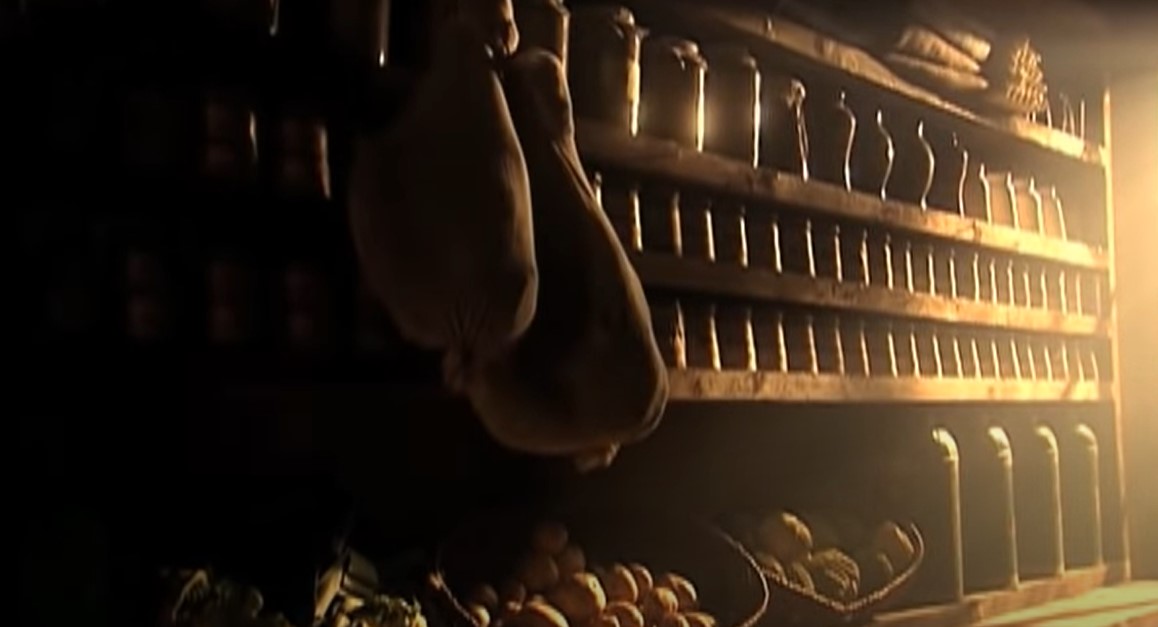 October Films, Mary Seacole: The Real Angel of the Crimea (2005)
October Films, Mary Seacole: The Real Angel of the Crimea (2005)
12. She Faced A Tragedy
Mary Seacole and her husband only had a few good years at Blundell Hall before tragedy struck. On August 29, 1843, there was a huge fire in Kingston and the hall, which had served scores of injured and ill patients, was engulfed in flames. Sadly, the fire destroyed most of the building.
Maybe Seacole was starting to believe that getting married had brought her bad luck. What happened next would make her certain.
 October Films, Mary Seacole: The Real Angel of the Crimea (2005)
October Films, Mary Seacole: The Real Angel of the Crimea (2005)
13. She Lost Him
With some hard work and determination, Seacole and Edwin managed to rebuild Blundell Hall into an even more wonderful place. Sadly, there was only a moment to celebrate. Just a year after the fire, Edwin—who’d always suffered poor health—died. Seacole began to mourn the loss of her husband, but another tragedy interrupted her.
 October Films, Mary Seacole: The Real Angel of the Crimea (2005)
October Films, Mary Seacole: The Real Angel of the Crimea (2005)
14. She Suffered One Loss After Another
Mary Seacole had already suffered what many would consider to be one of the worst things to happen—to lose a spouse at a young age. But the heartbreak didn’t stop there. Soon after, Seacole lost her mother. And Mrs Grant had been more than a mother to Seacole. She’d also been a mentor.
Between the fire and losing two family members in quick succession, Seacole felt the heavy toll. She closed her door and began to mourn. It looked like she would never come out again.
 October Films, Mary Seacole: The Real Angel of the Crimea (2005)
October Films, Mary Seacole: The Real Angel of the Crimea (2005)
15. She Locked Herself Away
Seacole’s grief was so profound, that she spent days where she barely moved. She had so much to deal with, and she wanted to do it properly. When she decided she’d mourned enough, Seacole bravely jumped into action. Her first move was a return to Blundell Hall, where she proudly proclaimed herself as her mother’s replacement.
Seacole had recovered right in the nick of time. There was something on the doorstep that had the potential to decimate the entire country.
 John Preston Neale, Wikimedia Commons
John Preston Neale, Wikimedia Commons
16. The Work Was Endless
In 1950, a horrible cholera epidemic hit Jamaica. Blundell Hall was once again full of patients in need of Seacole’s care. During the worst of it, men were actually proposing to the newly widowed Seacole. She declined them all and focused on the work which was endless—and sadly—mostly futile. When it was over, Jamaica had lost close to 32,000 people to the infection.
It had been one disaster after another, and Seacole finally scheduled herself some “me time”. Sadly, tragedy just seemed to follow her.
17. She Went For Some Rest And Relaxation
Mary Seacole had a half-brother who’d moved to Panama and opened a hotel. In 1851, she planned a visit that would be solely for pleasure and involve no work. She had no idea what she was really in for. As soon as she arrived, so did a cholera epidemic. Seacole put away her thoughts of relaxation and got down to work fighting yet another epidemic.
When her first patient walked away cured, word got around that Seacole was a miracle worker. Now, she’d have to prove herself.
 October Films, Mary Seacole: The Real Angel of the Crimea (2005)
October Films, Mary Seacole: The Real Angel of the Crimea (2005)
18. It Was A Losing Battle
Seacole’s reputation as a miracle worker soon attracted people in search of a cure. Seacole didn’t mind taking a few bucks from the rich, but her treatment was always free for the poor. Sadly, even with Seacole’s help, both groups suffered losses. This so-called “miracle worker” was fighting a losing battle.
And then the unthinkable happened.
 October Films, Mary Seacole: The Real Angel of the Crimea (2005)
October Films, Mary Seacole: The Real Angel of the Crimea (2005)
19. She Had To Rest
People in Panama called Seacole the “yellow doctress”, but for some reason no one ever thought about her catching the dreaded illness herself. Well, in Panama, she did. Just like when she was a child, she became her own patient. A few weeks of rest was all she needed, and she emerged from her bedroom with an idea.
One that could make her a lot of money.
 October Films, Mary Seacole: The Real Angel of the Crimea (2005)
October Films, Mary Seacole: The Real Angel of the Crimea (2005)
20. She Tried Something New
Panama was the preferred route for Americans following the gold rush in California. With this steady flow of travelers, Seacole decided on a new kind of venture. She’d always been handy in the kitchen, so she opened a restaurant. The building she found had two rooms. One became her bedroom, and she squeezed in seating for 50 diners in the other.
The restaurant was a huge success, and it brought a great deal of popularity—but some of it was downright insulting.
 October Films, Mary Seacole: The Real Angel of the Crimea (2005)
October Films, Mary Seacole: The Real Angel of the Crimea (2005)
21. He Wanted To Change Her
When Mary Seacole made a move from one city to another, the locals were sad to see her go. One man made a speech about how much he admired Seacole. Sadly, he didn’t leave it at that. He went on to say that, if he could, he would “bleach her by any means” to make her more “acceptable”.
Seacole angrily told the guy off, but there was just more prejudice waiting for her.
 October Films, Mary Seacole: The Real Angel of the Crimea (2005)
October Films, Mary Seacole: The Real Angel of the Crimea (2005)
22. They Wouldn’t Let Her On
In 1852, it was time to leave Panama and return home. When Seacole attempted to book passage on an American ship, they cruelly told her that Black people were not welcome on the voyage. When the next vessel arrived—a British one—they kindly allowed her on. It was smooth sailing back to Jamaica, but more trouble was waiting for her there.
23. It Was A Lost Cause
Back in Jamaica, there was an outbreak of yellow fever. Of course, Mary Seacole rolled up her sleeves and got down to work. Sadly, she arrived too late. The epidemic was already out of control, and Seacole could do little but care for those who had a chance of survival. She saw that tragedy through and then got wind of something else.
There was another problem in the world. One that affected her personally.
 October Films, Mary Seacole: The Real Angel of the Crimea (2005)
October Films, Mary Seacole: The Real Angel of the Crimea (2005)
24. She Felt A Sense Of Duty
Over the years, Seacole had met many men serving in the British army and now she heard that these same men were fighting a new battle raging in Europe. This was the battle for Crimea and the men were perishing not just from their injuries, but also from disease. She quickly booked a passage to England.
As it turned out, she also had a selfish reason for crossing to the UK.
25. She Took Care Of Business First
Before Mary Seacole could volunteer to help out in Crimea, she had to deal with her business. Back in Panama she’d invested in the gold mining industry, and these investments needed her immediate attention. Sadly, the tangled mess of her finances actually made her miss the first three battles in Crimea.
When she heard that the enemy had heartlessly sunk a supply ship, she knew she had to get to Crimea before it was too late.
26. They Told Her No
The famous nurse Florence Nightingale was heading the movement of nurses from the UK to Crimea and Seacole approached her organization to sign up. She was in for a harsh surprise. Even with her impeccable references, she got a firm “No thank you”. Seacole knew that one reason was that she didn’t have any official certification as a nurse.
She also suspected another, more sinister reason.
27. She Packed Everything She Needed
Mary Seacole suspected that it was her skin color that was behind her rejection. Seacole wouldn’t let this prejudice deter her, and she prepared to go there on her own dime. She collected all she needed and boarded a ship heading for Constantinople. Seacole had no idea what she’d find there, or what kind of welcome she’d receive.
28. She Finally Met Her
Once in Constantinople, Mary Seacole had to make her way to Balaclava, where they needed her help the most. On her way, she went to the place where Florence Nightingale was carrying out her aid. Nightingale was polite and offered Seacole anything she needed. Well…anything except a job. Seacole took a bed for the night and was off the next morning.
Seacole felt that Nightingale wanted nothing to do with her, and she wanted to know why.
29. There Was Nothing There
Seacole brushed off the weird treatment from Nightingale and focused on her task. She arrived in Balaclava and decided to build a hotel. As it turned out, there were no building materials available, so Seacole started looking at the things that people had thrown away. She found scrap metal and wood and even old packing cases.
Somehow she was going to have to turn this pile of garbage into a hotel.
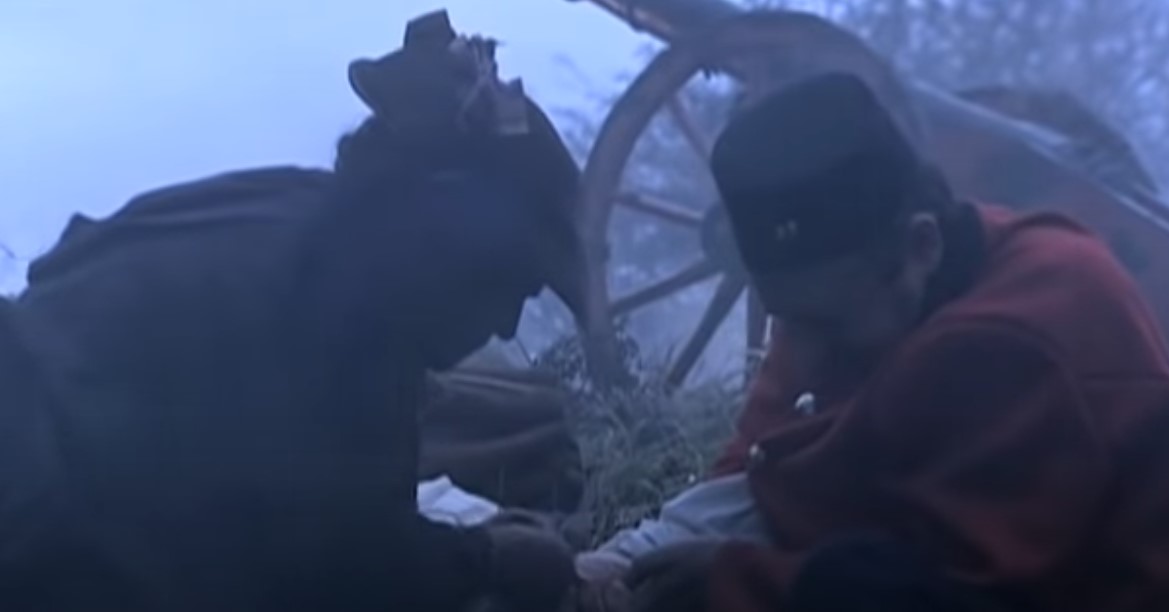 October Films, Mary Seacole: The Real Angel of the Crimea (2005)
October Films, Mary Seacole: The Real Angel of the Crimea (2005)
30. She Was A Foodie
By March of 1855, Seacole had put together a makeshift establishment that she called the British Hotel. She hired two cooks and she shared her time between the kitchen and taking care of the injured. Her food was not just simple army fare. In fact, it attracted some high ranking officials and even the Turkish commander.
And word soon spread that there was a reason to visit the British Hotel besides the food.
 Streamlight Studios, Shutterstock
Streamlight Studios, Shutterstock
31. She Helped Them De-Stress
If anyone needed a place to unwind with a strong drink it was the ones fighting the battle. Seacole had no problem providing this service, and of course, most of them took advantage. It certainly wasn’t Seacole’s fault when one or two of her customers—or likely many more than that—took things a little too far and misbehaved.
Of course, word got back to Florence Nightingale, and she was not a happy camper.
32. She Made A Frenemy
Nightingale did acknowledge that Seacole was providing a service to the battle weary men, but she could not commit to being on “Team Seacole”. In a letter to her brother-in-law, Nightingale admits to wanting to keep her nurses away from Seacole. In the letter she says that Seacole’s presence introduced “drunkenness and improper conduct”.
Nightingale made it seem like Seacole was a devil with a martini shaker, but in reality Seacole’s service was also quite innocent.
 October Films, Mary Seacole: The Real Angel of the Crimea (2005)
October Films, Mary Seacole: The Real Angel of the Crimea (2005)
33. She Didn’t Know The Truth
Mary Seacole, who had no idea about Nightingale's true opinion, continued to serve the enlisted men. When injured infantrymen waited in pain for transport to the hospital, Seacole was there with what any good British citizen needed: a cup of hot tea. At one point she served more than 200 suffering men.
Of course, she wasn’t just providing tea. Seacole also risked her life in the name of helping others.
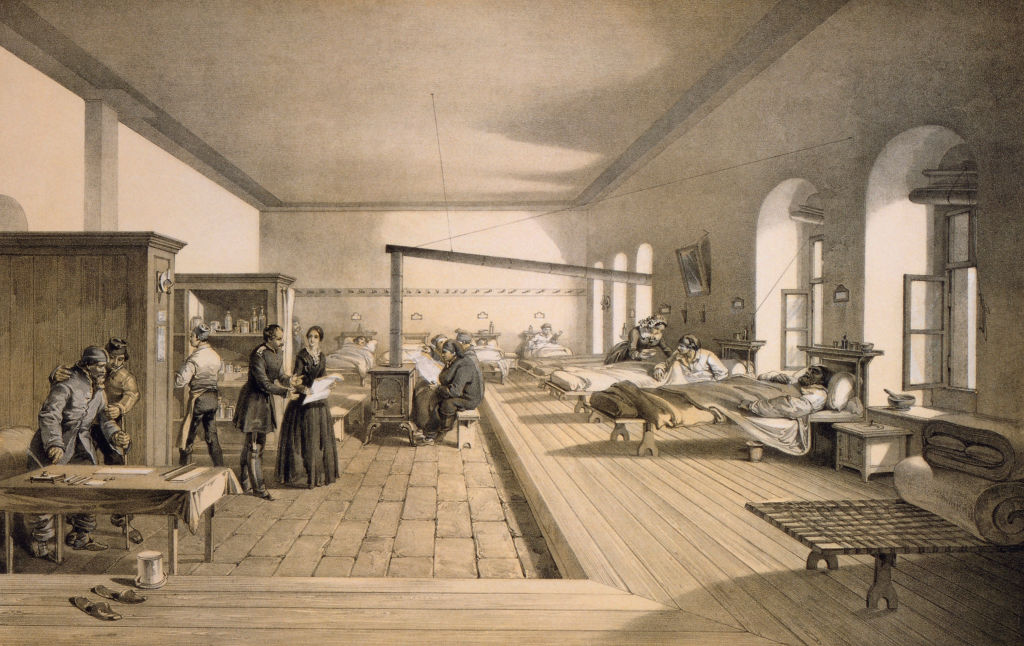 UniversalImagesGroup, Getty Images
UniversalImagesGroup, Getty Images
34. She Risked Her Life
When she wasn’t serving at her hotel, Seacole would sometimes get on her horse and bring medical supplies to the battleground—and she faced incredible danger. One time when she heard shooting overhead, she hit the dirt. Unfortunately she hit the dirt a little too hard and dislocated her thumb.
Seacole was obviously ready to give her all for the Crimean conflict, she was also ready to take something as well.
35. She Made A Buck
Apparently there were some people at the Crimean battlefield who were heartlessly treating the conflict like a sporting event. Seacole saw this as an opportunity to make some money, so she sold refreshments to the “spectators”. If her markup was as high as at an NBA game, Seacole was really raking it in.
As the fight for Crimea was coming to an end, Seacole found yet another way to give her pocketbook a boost.
 October Films, Mary Seacole: The Real Angel of the Crimea (2005)
October Films, Mary Seacole: The Real Angel of the Crimea (2005)
36. She Was The First
On September 7, 1855, the French had taken the key city of Sevastopol. Seacole sensed this was a pivotal moment and got there as soon as she could. As it turned out, Seacole was the first British woman to enter the fallen city. Her kindness knew no bounds, and she even helped the injured Russians.
Besides kindness, Seacole had a selfish reason for getting to this city quickly.
37. She Took What She Wanted
Of course, once a city falls, one of the inevitable results is looting. Seacole joined the French and picked up some items for herself. She got a candle from an altar, a bell from a church and even a huge painting of “The Madonna”. After this city fell, the battles ended and negotiations began.
Seacole had a bunch of bored servicemen on her hands, and she turned this situation into a real money-maker.
38. She Gave Them What They Needed
The men back at Balaclava were ready to party, and Seacole was ready to serve them. There were cricket matches and theater events and Seacole was there to make a buck selling refreshments. With all this extra work, Seacole needed an assistant.
Well, one miraculously showed up, and everyone wanted to know who the heck she was.
 Wirestock Creators, Shutterstock
Wirestock Creators, Shutterstock
39. She Was A Mystery
As Mary Seacole served up good times, people noticed that a 14-year-old girl had started working beside her. They only knew her by the name Sarah, and Seacole was tight-lipped about where she’d come from. Then rumors began to fly. Someone close to Seacole stunningly referred to Sarah as “Seacole’s daughter”.
Shock waves spread through the camp. If this was Seacole’s daughter, who was the father?
 October Films, Mary Seacole: The Real Angel of the Crimea (2005)
October Films, Mary Seacole: The Real Angel of the Crimea (2005)
40. It Was No Coincidence
Nightingale wasn’t above a bit of gossip, and she offered up the name Colonel Henry Bunbury as a potential father to Sarah. There was also a suspect named Thomas Day who had come to Crimea with Seacole as a business partner. Seacole said she’d bumped into Day by chance in London, but that now seemed highly suspicious.
Inquiring minds wanted to know, and it just took a little research to find out the truth.
 October Films, Mary Seacole: The Real Angel of the Crimea (2005)
October Films, Mary Seacole: The Real Angel of the Crimea (2005)
41. He Was Always Around
If you do a little digging, you’d find that Mary Seacole had known Thomas Day back in Panama and even as far back as Jamaica. And there was another, even more scandalous connection. Day had also been a friend of Edwin, Seacole’s late husband. So they had history, and they were now working together on the British Hotel.
It sounds like the solution to the mystery of the unknown father—except for one very important fact.
42. She Tried And Failed
After Mary Seacole left Crimea, there’s no mention of her having a daughter at all. She does, however, stick with Day. Back in London, the two opened a canteen together, which left them broke. It came out later that it was Day’s questionable business activities that may have caused the two of them to lose their shirts.
Seacole may have been short of cash, but she was about to learn just how rich she was in admirers.
 Unknown author, Wikimedia Commons
Unknown author, Wikimedia Commons
43. She Needed Protection
In August of 1856, there was a dinner where Florence Nightingale was an honorable guest. There had always been a competition between the two caregivers—and this event became a showdown for them. In the end, Seacole was so in demand at the dinner that two tough looking servicemen had to protect her from the crowd of admirers.
Round one went to Seacole, but she still had her money problems to worry about.
44. She Got Help
When the British public found out about Seacole’s financial difficulties, they rose to the occasion. Fundraising events sprung up and the largest, at the Royal Surrey Gardens, took in a good deal of money. Sadly, the host’s own financial ruin took away most of the profits from Seacole.
There was one surprising take away from this event. One of the secret donors was Florence Nightingale. Seacole was still in financial trouble, but relief was on its way. And it came from a unexpected source.
 UniversalImagesGroup, Getty Images
UniversalImagesGroup, Getty Images
45. She Got The Royal Treatment
There was one final fundraiser for Mary Seacole, and it had much more success. The names behind this event were as high up in British society as you can get. They were none other than Queen Victoria herself and her sons Edward VII and Alfred, Duke of Edinburgh. From this one event, Seacole was set with a good income for life.
Seacole could have sat back and relaxed, but that was not her style. She still had another face off with Nightingale ahead of her.
46. She Had A Deja Vu
In 1870, Seacole was once again ready to serve at another British battle. This was the Franco-Prussian conflict, and the person she applied to was Sir Harry Verney. Coincidentally, Verney was Florence Nightingale’s brother-in-law, and once again Seacole’s fate was in the nurse’s hands. Verney asked for Nightingale’s opinion and received a big thumbs down.
It seemed this rivalry of the nurses would never end.
 Wellcome Collection gallery, CC BY 4.0, Wikimedia Commons
Wellcome Collection gallery, CC BY 4.0, Wikimedia Commons
47. Seacole Versus Nightingale
Comparisons between Seacole and Nightingale are inevitable. Those on the Nightingale’s side call her the mother of the nursing profession. Seacole’s followers praised her for not being afraid to go right to the battle lines. The two women had one rather embarrassing thing in common. Historians now suggest that the media exaggerated their influence in Crimea.
There’s one forgotten fact that makes comparing Seacole to Nightingale like comparing apples to oranges.
 Photo Researchers, Getty Images
Photo Researchers, Getty Images
48. They Weren’t The Same
The battle of the nurses has to go to Nightingale for a very obvious reason. You see, Seacole was never actually a nurse. Seacole’s health training didn’t come from college, it came from watching her mother and British doctors. In fact, Seacole later said that her treatment of patients was full of “blunders”. Seacole did some amazing work for the suffering, but she was not technically a nurse.
Maybe this is why Britons cruelly turned their backs on Seacole.
 October Films, Mary Seacole: The Real Angel of the Crimea (2005)
October Films, Mary Seacole: The Real Angel of the Crimea (2005)
49. She Was Forgotten
Seacole’s last known address was in the Paddington area of London, where she passed due to a stroke on May 14, 1881. While Jamaicans never forgot her, the British public sadly did. In 1973, someone came across her grave which had been completely neglected. By 1981, a century after her passing, there finally was a memorial service.
Strangely, Seacole’s story wasn’t quite over yet.
50. The Rivalry Continues
Five years after Nightingale’s passing, a statue went up to commemorate a life of caregiving. It took over one hundred years, but on June 30, 2016, they finally erected Seacole’s statue at London’s Saint Thomas’ Hospital. If you think the rivalry was over, think again.
Nightingale fans complained that Seacole’s statue might deter attention from their precious Nightingale.











